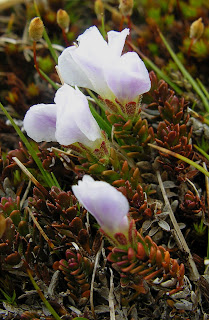We've recently returned from a few days holiday in Yogyakarta
after working with Indonesian scientists at the Museum Zoologicum
Bogoriensis in Bogor (near Jakarta).
For a challenge I
visited Pasar Ngasem Baru/ New Bird Market armed only with a wide-angle 16-35mm
lens. Using a wide-angle lens means you have to get up close a personal
with whatever you're photographing. People definitely know you're taking their photograph as you're often only 2-3 feet away and sometimes less than 1 foot away!
They do things differently in Indonesia - like dyeing their chickens different colours!
The number and diversity of birds on sale is staggering - this is shop 12 of about 60. All selling birds and wildlife.
Many of the cages are highly decorated.
And of course all these birds need to be fed!
Some stall holders are very friendly - this man asked for me to take a photo of his son and him during their lunch break.
One surprise was this man - patiently hand-making individually-numbered coloured aluminium rings that are slid onto the bird's legs so that they can be identified.
In Indonesia it is considered lucky to own wildlife, particularly a bird that sings loudly and most larger towns have a bird market. The birds are mostly caught in the wild and come from throughout Indonesia. This white-rumped shama is still common in parts of Indonesia, but not on the main island of Java as most are caught by bird trappers. The bird trade is one of the major reasons for many of Indonesia's birds being evaluated as at risk of extinction. For sale in this market was a subspecies of the endangered red and blue lory which is only found on the Talaud Islands - 2240 kilometres away! Scientists sometimes use the bird species they find in the local market as a guide to which rare birds occur in the surrounding area.
Having to get up so close to people to take photos was great fun - even if they obviously thought you were a bit strange. It did lead to interesting conversations carried out in a mix of broken Bahasa Indonesia from me and broken English from them!
And in case you're wondering why it is called the new bird market - the old bird market was situated next to the food market, but was moved by the government following the bird flu outbreak. Tourists still turn up a the old site looking slightly bewildered by the lack of birds!
We also took the opportunity to visit the famed Borobodur temple. From a distance it looks like a large pile of rocks on a lawn:
But on closer inspection it is an intricate maze of carvings and stonework:
Temples are a feature of village life throughout Indonesia and they're frequently used by local children as a playground and sports field:

































